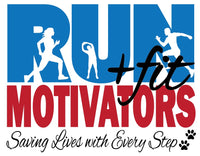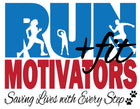Movement, Mood, and Music: How Neurodivergent Brains Respond to Fitness Differently
If you're neurodivergent—whether you're living with ADHD, autism, or another brain difference—you've probably noticed that traditional fitness advice doesn't always land. You're told to "stick to a routine," "stay consistent," or "push through the mental block." But what if your brain thrives on novelty, rhythm, and a little chaos? What if your mood drives everything?
You're not broken. You're not lazy. You're just wired differently. And the good news? That wiring holds a lot of untapped power—especially when it comes to movement.
Let’s talk about how fitness hits differently for neurodivergent folks—and how you can use that to your advantage.
1. You Don’t Need Routine—You Need Rhythm
Neurotypical brains often love structure. For many neurodivergent people, that structure quickly turns to monotony. Repeating the same workout at the same time every day? That’s not motivating—it’s suffocating.
Instead of rigid routines, focus on rhythm:
-
Match your workouts to your mood. Feeling hyper? Do a fast-paced dance video. Feeling overwhelmed? Try gentle stretching or a solo walk.
-
Time-block movement, not workouts. Give yourself a movement window and pick what feels best in that moment.
-
Cycle your workouts like playlists. Rotate through different movement types each week to keep things fresh.
2. Music Is More Than Background Noise—It’s a Trigger
Music is a superpower for neurodivergent brains. It can override executive dysfunction, boost dopamine, and change your entire sensory landscape in seconds.
Use that to your advantage:
-
Create playlists for specific moods. Have a “let’s move” playlist, a “get out of bed” playlist, a “rage walk” playlist—you get the idea.
-
Use music as a cue. Start the same song before each workout to train your brain to shift into movement mode.
-
Match the beat to the goal. Need to burn off anxiety? Crank up the tempo. Need to self-soothe? Pick a chill rhythm and let it guide you.
3. Novelty Isn’t a Distraction—It’s Fuel
Many neurodivergent people crave novelty. In the fitness world, that’s often misinterpreted as “lacking commitment.” But trying new things can be exactly what keeps you moving.
Ways to embrace this:
-
Don’t commit to a workout plan. Commit to exploring movement options instead.
-
Mix formats often. Try yoga one day, boxing the next, swimming after that. It doesn’t matter what it is—as long as you’re moving.
-
Follow your curiosity. That weird-looking dance workout on YouTube? Try it. A silly fitness game app? Go for it. If it gets your body moving, it counts.
4. Sensory-Friendly Fitness Matters More Than You Think
For those with sensory sensitivities, certain fitness environments can be downright hostile. Bright lights, loud gyms, crowded spaces—all of that can make movement feel unsafe.
Create a sensory-safe movement experience:
-
Wear comfy clothes that feel good on your skin.
-
Exercise in your safe space. Your living room, your backyard, or wherever you feel most regulated.
-
Control the stimuli. Dim the lights. Use noise-canceling headphones. Make your space yours.
5. Fitness Isn’t About Fixing You—It’s About Empowering You
You don’t need to become more “disciplined” or more “normal.” You need fitness strategies that align with your beautifully different brain. And once you find what works, movement can become a game-changer for emotional regulation, energy, and overall well-being.
So go ahead—move in ways that feel good. Move with the music. Move with your mood. And most importantly, move on your terms.
Save this post, pin it for later, and share with a friend who’s tired of being told to “just stick to it.” Neurodivergent fitness deserves its own rules—and this is where they begin.




Leave a comment